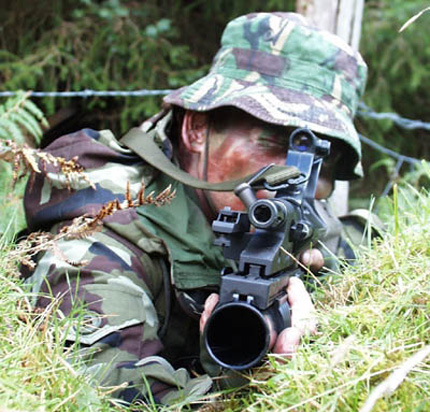When Collaboration is Literally Life or Death...


For those who think collaboration technology simply breaks down rigid command and control management hierarchies, consider the origins of the term: the military.
The US military have had a significant online presence with various online forums for rank and file, commanders and other lines of business - all behind user name and password of course - for the last decade or so.
This collaborative component of military life is an essential part of the US military as this article 'CompanyCommand—Building Combat-Ready Teams: Leaders Describe How the CompanyCommand Forum Makes a Difference' in Army magazine discusses.
To take a specific example:
The CompanyCommand (CC) forum is a growing network of company commanders who are dedicated to the cause of exceptional leadership at the company level. Thousands of us are connecting in an ongoing conversation—sharing our hard-earned knowledge and experiences, becoming more effective and advancing our profession.
Over the last nine years, the Army’s senior leaders— all past company commanders themselves—have been incredibly supportive of CC and other professional forums. They “get it” and want to maintain the grassroots, voluntary, by-and-for-the-profession nature that has made the forums so effective. Currently, the Army is seeking to expand the operating force and may draw from the generating force to make it happen. With this in mind, we recently asked members to share their reallife stories and concrete examples of how the CC forum has made a difference. What follows here is a small sample of the outpouring of feedback from leaders across the Army.
What's intriguing about this article is the user case histories described in a place you probably wouldn't expect to find ringing endorsements of 'Internet social networking' especially in light of the recent threats to ban Twitter, Facebook and other consumer social networking sites by the US Department of Defense.
This is a great example of the difference between consumer 'software as a service' (SaaS) and properly set up collaboration networks. Where Twitter short urls could lead to malware and Facebook is not geared up to filter malicious attacks, the military are a textbook example of people who are literally likely to be attacked - and for whom cyber warfare is an increasingly important reality of warfare.
To pile on this SaaS weaknesses perspective, Google docs could land you in jail if Google decides your discoverable legal electronically stored information 'isn't available'.
The behind the firewall collaborative alternative to these consumer offerings keeps information and systems safe, and I'm assuming there is a clear differentiation of what constitutes communicating with friends and home on the internet and logging into milSpace, just as should be the case when logging into your account as the employee of a large company to work.
Case histories are much sought after by employees in large companies tasked with setting up Enterprise 2.0 social media collaboration networks to demonstrate best use cases. The reality is that the endorsements of the utility various users have enjoyed by using the 'CompanyCommand forums' are intriguingly broad. While CompanyCommand is powered by Tomoye Community Software, who I'm sure are providing a great platform, it's the use cases that are so compelling in this article, as this example citation illustrates:
"I am still not totally sold on Internet social networking, but I do know a few things about CompanyCommand. I used it as a young lieutenant to see how and what current captains were doing. I used it as a staff officer at both the battalion and brigade combat team levels to understand what my peers needed and how I could help them better. I also used it to mourn the loss of friends who had died in battle. Most of all, I used the CC forum for answers—answers not found in any AR, FM, TM or publication; answers never taught to me by any leader or class; answers to questions such as: What do you do when a Soldier under your command dies? How do you get through a 15-month deployment when you are separated from your family? How do you keep it together as a commander when the going gets tough so you don’t let your Soldiers down? Even though I had never kept a journal, I had the privilege of maintaining a Commander’s Blog on the CC forum for about seven months while deployed in 2006–07; it was a way to vent, receive reality checks from peers and receive advice from past commanders. This made such an impression on me that I am now volunteering my time to assist in running the forum". —Jason
The two quotes above about leadership and grass roots adoption to obtain tacit knowledge aren't your usual anodyne 'learn about how the Belgian department's widgets will work with our division's products' examples. These are literally life and death, keep the morale up to figure out how to survive and succeed in potentially deadly circumstances use cases of collaboration.
This should give pause for thought to the silicon valley sophisticates passing judgement on the endless featherweight iterations of consumer SaaS offerings they think could work inside companies as 'social media'.
While life inside businesses isn't as literally visceral and dangerous as army life, the competitive challenges of business are not to be underestimated.
Industrial strength strategic planning of collaboration environments will definitely separate the weakly organized from the ultra connected and clued up and is a key differentiator in modern business.